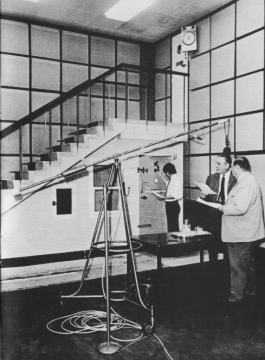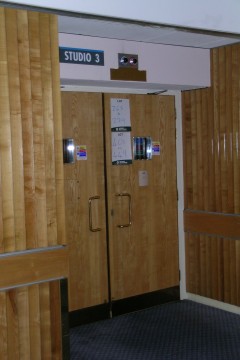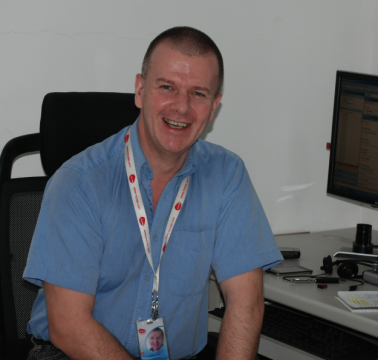There are many tales of spooky goings on at Pebble Mill. I too had a slightly unexplainable experience in Studio 3. Whilst staying late one evening to prep some SFX I was working in the cubicle and the lights on the studio floor were off. I heard the sound of the studio door open as if being picked up via one of the mics and coming out of the speakers. I assumed it was security doing their checks but when I looked at the desk there were no mics faded up. Strange I thought and carried on working. I was at the back of the cubicle and several times turned round suddenly as I could have sworn someone came in through the door at the back. At this point I thought this was all getting a bit weird but put it down to being tired and went home.
The next day I mentioned this to a colleague who wasn’t surprised to hear my tale and told me more tales of mysterious moving props, rearranged furniture and similar bizarre goings on. A few months later another of my colleagues also had a weird experience of strange things happening with CD players and unexplained sounds coming from the speakers.
Before we left Pebble Mill we did a piece for Halloween for Late Night Currie. The programme was broadcast from the Mailbox but we still had the ISDN facilities in Studio 5 at the Mill so we did a little OB from there. We had various psychics and ghost hunters in studio 3 at Pebble Mill trying to fathom out all these ghostly tales and see if there was anything there!
After the TX the ghost hunting team said they’d love to do an all night ghost watch before the building was demolished. So we did! It was all very spooky and there were certainly some cold spots and unexplained feelings around Studio 3 and some of the basement areas.
I do have a copy of the report but it is not conclusive as to paranormal activity. All I know is that there are certainly some good tales of spooky goings on and having experienced something bizarre myself I have to admit I’m not quite as sceptical about ghosts as I once was!
Kath Shuttleworth





